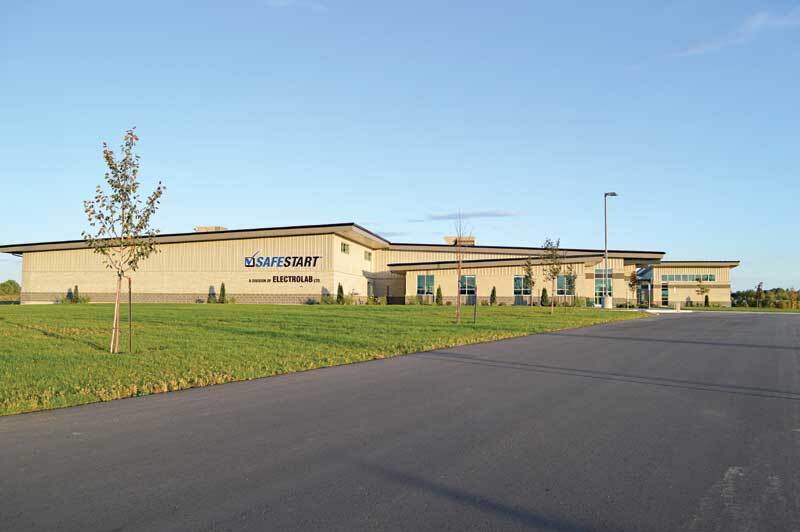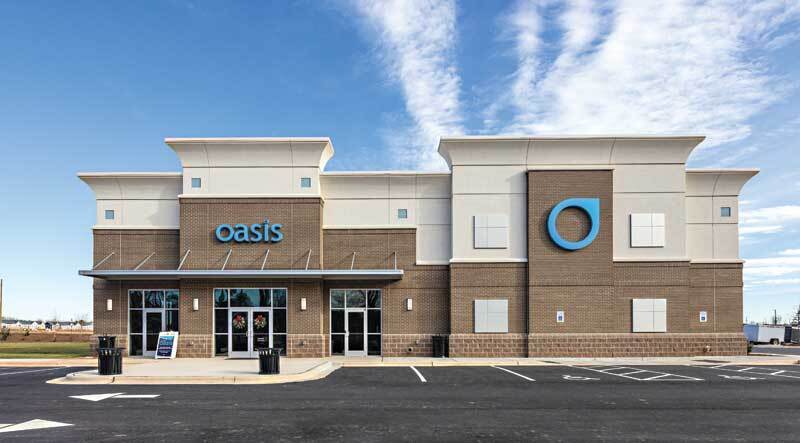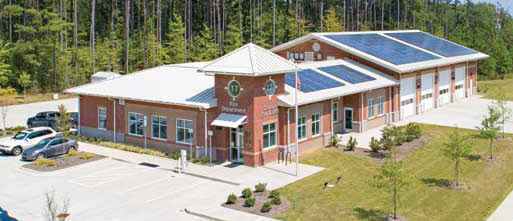Design-build is the fastest growing, and most popular, delivery method for construction projects in the America. According to the Design-Build Institute of America (DBIA), design-build projects hold a 47% market share, with nearly half of America’s construction dollars spent on these types of projects. It also notes that design-build projects are delivered 102% faster than traditional design-bid-build projects.
Project numbers and size grow as design-build becomes more mainstream

SafeStart, Belleville, Ontario, Canada. (Photo courtesy of Bel-Con.)
A September 2021 design-build utilization report from DBIA and FMI Corp. shows that over the next five years, design-build will continue to grow, despite challenges from the COVID-19 pandemic. The report projects that design-build will post a 7.6% annual growth rate from 2021 to 2025 and deliver $406 billion in construction in the assessed segments in 2025, which include lodging, recreation, highway/street, health care, education and more. FMI expects 34% total growth in design-build construction spending over that time frame.
Versus traditional design-bid-build project delivery where owners manage contracts between an architect or designer and a contractor, design-build provides a single point of responsibility with the designer and contractor working together from the beginning. This provides a better understanding of project goals, higher levels of communication and collaboration, while creating more opportunities to provide value in ways that don’t impact the schedule.

Oasis Church, Holly Springs, N.C. (Photo courtesy of Bobbitt)
Increased Interest
As design-build is being adopted more and more by clients as a preferred project delivery method, Tom Gunsinger, president of Bel-Con Design-Builders, Belleville, Ontario, Canada, says he has been seeing an increase in the number of design-build projects his company does. Bel-Con, which was formed as a design-build company in 1973, is celebrating its 50th year of providing design-build services, of which Gunsinger notes that typically 80 to 90% of their projects are design-build. “The single point of contact and shorter project execution time are probably the two main reasons for the rising popularity of design-build,” he says.
With approximately 92% of the Kaukauna, Wis.-based Keller Inc.’s work as true design-build, Cory VandeWettering, president and CEO, attributes the increased interest in design-build largely to relationships. “Design-build is truly a relationship-driven delivery method that best performs when value is shown and trust is earned,” he says. “We find success in having a team approach to our projects. By pre-selecting qualified subcontractors, and working together with the customer to provide solutions, it sets projects up for the best opportunity for success.”
Andy Speck, PE, DBIA, preconstruction executive at Bobbitt, Raleigh, N.C., notes that 65 to 70% of their work by dollar volume is design-build. One area in which the company has seen noticeable growth is within the public sector, especially after North Carolina passed legislation in 2014 authorizing governmental agencies to use design-build. “Initially, there was resistance and a lack of understanding on the part of the owners about how to procure design-build services, but acceptance of design-build is growing so the number of opportunities continues to grow. We’ve now completed several design-build projects for governmental agencies within the state and are currently in preconstruction on a 75,000-square-foot consolidated Health and Human Services building.”

Johnston County Area Transit System (JCATS), Selma, N.C. (Photo courtesy of Bobbitt.)
Design-Build Benefits
Compared to other project delivery methods, DBIA states the benefits of design-build include lower unit costs, faster construction times, less cost growth, less schedule growth and faster delivery speed.
While shorter overall project duration is one of the better publicized advantages of design-build, Speck says one benefit that a lot of owners may not know is that design-build gives them more control over the entire project. “In fact,” he says, “I’ve met with many owners unfamiliar with design-build who fear they will lose control of the project since they aren’t contracting directly with the architect. However, they actually gain greater control over the entire project design and construction process because they are working with the entire project delivery team.”
Having architects and engineers on staff allows the company to offer integrated design-build services, Speck says. “In this scenario clients have a team of design and construction professionals who regularly work together so there is a high degree of trust and synchronization amongst the team members which makes for a very high performing project team.”
Another benefit Gunsinger notes is that design-build allows us to provide our clients with flexibility to alter materials or offer value engineered options without the restrictions of hard bid specifications.
And, as a Butler Builder, Gunginger says, “having the availability of a building system that provides a superior roof, continual research and development of energy-efficient thermal systems and a variety of structural systems makes for a natural combination for a design-build contractor.”
And, by self-performing the erection and installation of metal building systems projects, Gunginger says this is another advantage to customers in terms of schedule and quality being handled directly by their design-build partner.

Durham Fire Station #17, Durham, N.C. (Photo courtesy of Bobbitt)
Wider Acceptance
In recent years, Gunsinger says design-build projects have become larger and more complex. Most likely, he notes, because of wider acceptance, and the maturing of the industry as a whole. Speck agrees, saying as owners are becoming better educated to the benefits of design-build, they’re starting to demand it more often. And, Speck says working with design professionals, especially architects, who recognize working as part of an integrated project delivery team allows them to better deliver for their clients.
VandeWettering thinks design-build delivery will continue to thrive in the coming years, especially with labor and material challenges here to stay, as well as tighter plan-to-build completion schedules, design-build is best suited to efficiently plan, design and construct. “The speed to market is generally achieved sooner with design build than any other project delivery method available in the market,” he adds.
For owners who are interested in design-build but don’t know much about it, Speck encourages them to do their research and talk to design and construction professionals who are experienced and proficient with it. “I also encourage owners to engage DBIA Certified Design-Build Professionals when procuring design-build services. That certification is earned through a combination of experience and additional education in Design-Build Done Right.”
Finally, Gunsinger recommends that clients properly evaluate the design-build proposal and not just take the lowest number. “A winning design-build proposal should be chosen on the basis of value of the project including the post-construction life cycle of the facility.”





